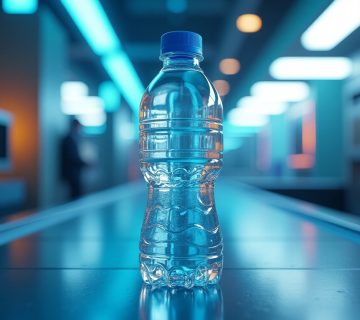Acrylonitrile Butadiene Styrene (ABS) ranks among the most commonly utilized thermoplastic Polymers globally. Renowned for its impressive mix of sturdiness, resistance to impacts, and simple processing, ABS has become a preferred material across various sectors, including automotive, electronics, consumer products, and 3D printing.
This article explores the features of ABS plastic, its manufacturing procedure, major uses, and the factors that contribute to its lasting appeal.

What is ABS Plastic?
ABS is a type of terpolymer, meaning it is created from three distinct monomers: acrylonitrile, butadiene, and styrene. Each of these elements adds unique attributes to the finished polymer:
• Acrylonitrile offers resistance to chemicals, stability under heat, and strength.
• Butadiene ensures the material is tough and possesses impact resilience.
• Styrene facilitates easy processing and gives ABS a shiny surface.
The combination of these traits makes ABS an incredibly adaptable material appropriate for a multitude of uses.
Key Properties of ABS Plastic
ABS plastic is distinguished by several noteworthy properties that make it a favored option in diverse manufacturing applications.
Impact Resistance
One of ABS’s most striking characteristics is its outstanding capacity to resist impacts. This capability makes it perfect for items requiring the ability to endure physical stress, like automotive components and protective enclosures.
Strength and Durability
ABS is both robust and long-lasting, delivering dependable performance in challenging scenarios. Its resistance to wear is vital for parts subjected to regular usage.
Chemical Resistance
ABS holds up against a variety of chemicals, including acids, bases, and oils, making it ideal for application in settings where contact with these substances occurs frequently.
Thermal Stability
Even though ABS has a slightly lower melting point compared to other plastics, it provides good thermal resilience for many typical uses. This quality makes it suitable for products that may face moderate temperatures.
Ease of Processing
ABS is easily molded and conformed, making it an excellent choice for techniques such as injection molding, extrusion, and 3D printing. Its straightforward processing enhances manufacturing efficiency.
Aesthetic Versatility
ABS can be colored and polished to achieve a glossy finish, which makes it a preferred option for consumer products where visual appeal matters.
Production of ABS Plastic
The creation of ABS includes the polymerization of the three monomersacrylonitrile, butadiene, and styrene. This process can be performed through either emulsion or mass polymerization techniques:
• Emulsion Polymerization: This is the most frequently employed method, wherein the monomers are polymerized in a water-based solution aided by surfactants to form a stable emulsion.
• Mass Polymerization: In this approach, the monomers are polymerized in bulk, a method that presents environmental advantages as it eliminates the need for solvents.
After polymerization, ABS pellets are produced and become available for manufacturers to utilize in various molding techniques.
Applications of ABS Plastic
The distinctive combination of characteristics that ABS offers renders it suitable for an extensive variety of applications across several industries.
Automotive Industry
In the auto industry, ABS is utilized to create dashboard parts, interior decorations, bumpers, and other components that need strength, resistance to impact, and a quality finish. Its lightweight characteristic also aids in enhancing fuel efficiency in vehicles.
Consumer Electronics
Within the electronics sector, ABS is a favored material for crafting covers for devices such as computers, televisions, and smartphones. Its durability and capacity to be shaped accurately make it perfect for encasing sensitive electronic parts.
Household Appliances
ABS is widely employed in making both small and large home appliances, including vacuum cleaners, fridges, and washing machines. Its robustness, resistance to chemicals, and ease of shaping make it a popular choice for these items.

Toys
In the toy sector, ABS is frequently used due to its safety, longevity, and ability to be molded into intricate designs. A well-known application of ABS is in LEGO bricks, prized for their precise interlocking and durability.
3D Printing
ABS stands out as one of the most common materials in 3D printing, especially in fused deposition modeling (FDM) printers. Its straightforward printing process, along with its durability and strength, makes it a favored option for prototypes and practical applications alike.
Medical Devices
ABS is also involved in making a variety of medical tools and equipment housings. Its capability to withstand sterilization and its impact resistance render it suitable for healthcare purposes.

Advantages of ABS Plastic
The broad adoption of ABS plastic stems from numerous benefits it presents compared to other materials.
Cost-Effectiveness
ABS is relatively affordable to manufacture and process, making it an economical choice for producers aiming to find a balance between quality and cost.
Machinability
ABS can be easily machined, drilled, and cut, making it suitable for projects that necessitate precise, custom-shaped components.
Surface Finish
The capability to achieve a shiny finish and be available in various colors gives ABS an aesthetic edge, especially in consumer goods.
Dimensional Stability
ABS retains its form and measurements well over time, even when exposed to diverse environmental conditions, ensuring that components stay functional and fit rightly.
Challenges and Considerations with ABS
Despite its numerous advantages, ABS plastic comes with a few drawbacks:
Low UV Resistance
ABS can deteriorate and become fragile when subjected to long-term ultraviolet (UV) exposure, which restricts its suitability for outdoor usage unless treated appropriately.
Low Melting Point
ABS can deteriorate and become fragile when subjected to long-term ultraviolet (UV) exposure, which restricts its suitability for outdoor usage unless treated appropriately.
Environmental Impact
Being a petroleum-based plastic, ABS is non-biodegradable, raising issues regarding its environmental effects. Nonetheless, its recyclability can alleviate some of these concerns if managed effectively.
The Future of ABS Plastic
The need for ABS plastic is anticipated to keep increasing, fueled by its adaptable nature and prevalent application across different sectors. With rising environmental issues, efforts are underway to create more eco-friendly versions of ABS, including bio-based options and enhanced recycling techniques. Furthermore, improvements in additives and coatings may bolster ABS’s characteristics, such as resistance to UV rays and fire, thereby broadening its range of uses.
ABS plastic serves as a fundamental element in contemporary manufacturing, providing a distinct mix of resilience, longevity, and design flexibility. Its extensive application across various sectors from automotive to electronics to 3D printing highlights its adaptability and dependability. Although there are challenges linked to ABS, especially regarding its environmental footprint, continuous advancements are poised to tackle these challenges and ensure ABS’s significance as a material in the future. As industries transform and new innovations arise, ABS will persist in being an essential component in crafting the products and solutions ahead.




No comment